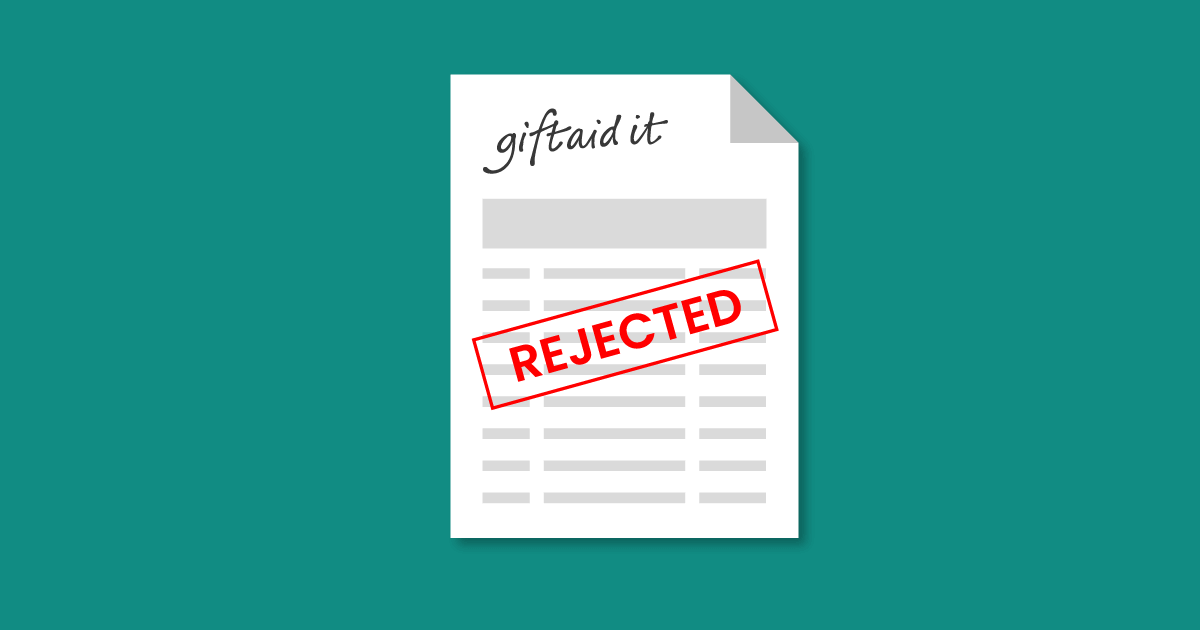Every year, over £500 million in eligible Gift Aid goes unclaimed in the UK. For many charities, the problem isn’t the generosity of donors, it’s the complexity required to meet HMRC’s standards.
Here are the top three reasons Gift Aid claims may get rejected by HMRC, and what your charity can do to avoid missing out.
1. Invalid or missing Gift Aid declarations
One of the most common reasons Gift Aid declarations are rejected is due to missing or invalid information. HMRC requires a declaration to include:
- The name of your charity or CASC
- The donor’s full name (at least their initial and surname)
- The donor’s home address (at least house number and postcode)
- Whether the declaration applies to one donation or all past, present and future donations
- A clear statement that the donor wants Gift Aid to apply (this can be a tick box)
- A note explaining that the donor must pay at least as much UK tax as the charity will claim, or they’ll need to pay the difference
If any part of this is missing or unclear, Gift Aid could go unclaimed. See the full HMRC guidance here.
🔧 How to fix it:
Use
declaration templates
that meet HMRC rules and check them as they come in. Going digital makes tracking and audits much easier.
NB: HMRC updated the Gift Aid declaration in 2015 and advises charities to use the latest version.
2. Incomplete or incorrect donor information
Doing full KYC (Know Your Customer) checks on donors just isn’t practical. Trying to check every supporter would be unrealistic and would put people off giving.
🔧 How to fix it:
Here are a few suggestions on how to make sure your donor data is ready for a claim:
- Check incoming data to make sure it appears credible.
- Use the Royal Mail PAF (Postcode Address File) to flag ineligible addresses like business or commercial properties.
- Check for titles in name fields; titles like “Mr” or “Sergeant” shouldn’t be entered as first names.
3. Missed the deadline to claim Gift Aid
Your deadline to claim Gift Aid depends on how your charity is set up.
- If you’re a charitable trust, you have 4 years from the end of the tax year (6 April to 5 April) in which the donation was received.
- If your charity is a community amateur sports club (CASC), a Charity Incorporated Organisation (CIO) or a limited company, you have 4 years from the end of your accounting period.
Getting this wrong could mean missing out on eligible Gift Aid.
🔧 How to fix it:
Make sure you know which rules apply to your organisation, set reminders, keep track of donation dates and plan regular claim submissions. Submitting claims quarterly, or at least annually, can help prevent missing out.
Learn more about how to claim here.
Good Practice
Keep a clear audit trail. Make sure each donation can be traced back to a valid Gift Aid declaration. It’s not just helpful for claims; it’s essential if you’re ever audited. Read more about the legislation here.
Final Thought
Gift Aid is hugely valuable in charity fundraising. By improving how you capture declarations, checking donor data and stay on top of claim deadlines, you could unlock thousands (or even millions) in extra income that’s already yours to claim.
Swiftaid is designed to help you do exactly that.
If you’re tired of admin-heavy claims or inconsistent declaration capture, get in touch:
Fill in our enquiry form here.



